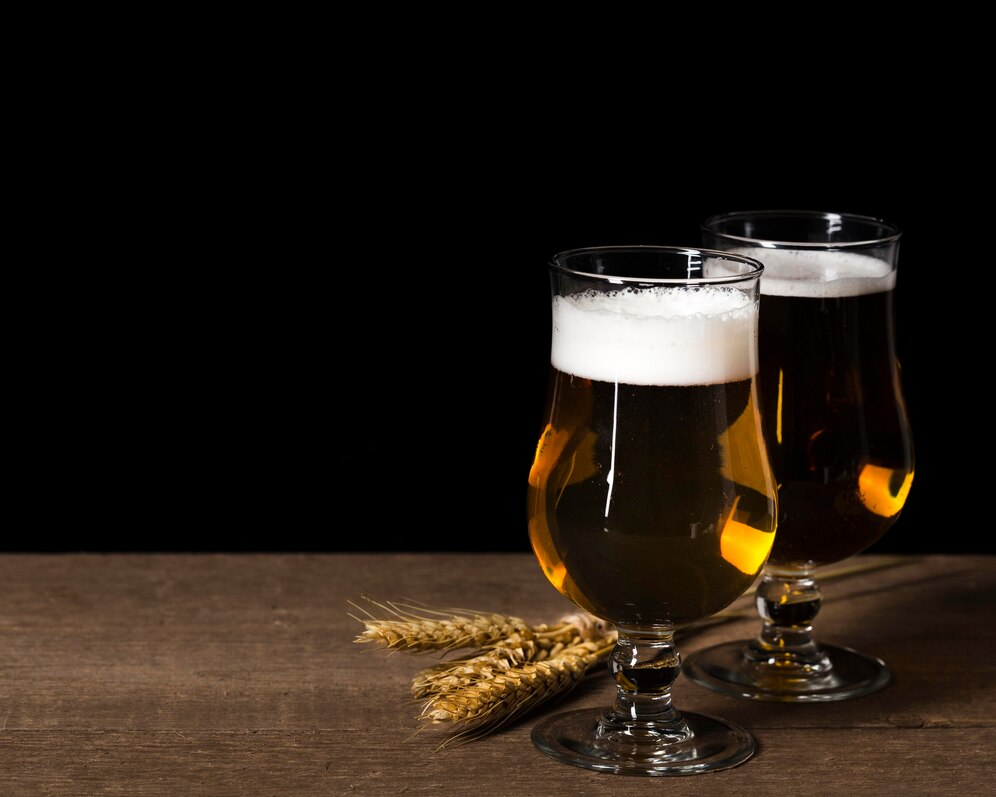Calories in Wine vs Beer: What’s Lighter?
When selecting an evening beverage, both personal preference and health considerations play pivotal roles. For those keeping a close watch on their diet, understanding the calories in wine vs beer becomes particularly crucial.
This guide explores the intricate differences in caloric content between these two popular drink choices, emphasizing organic and specialty brew options to cater to various lifestyle needs.
Weight Changes with Beer and Wine Consumption
The notion that wine aids weight loss while beer promotes weight gain is a common belief but requires a more nuanced understanding:
- Wine and Weight Management: Moderate consumption of wine, particularly red wine, is associated with certain health benefits and may have a smaller impact on weight gain compared to beer, mainly due to its lower calorie content per serving.
- Beer and Weight Gain: Beer typically contains more calories per serving, which can contribute to weight gain, especially in larger quantities. Additionally, the carbohydrates in beer can affect body weight.
Ultimately, whether wine or beer leads to weight loss or gain depends on drinking patterns, individual metabolism, and overall dietary habits. Moderation is key to preventing unwanted weight changes.
Detailed Analysis of Caloric Content in Beer and Wine
Globally, beer and wine are cherished, yet their caloric content differs significantly based on type, brand, and production methods.
The Broad Caloric Range of Beer:
- Light Beers: These typically provide 50-100 calories per 12 oz, appealing to those monitoring their calorie intake.
- Regular Beers: Average around 150 calories per serving.
- Craft Beers: Known for their unique ingredients and brewing methods, craft beers can contain up to 300 calories per serving, highlighting the diversity in caloric content.
Wine’s Caloric Impact:
- Dry White Wines: Range from 110-130 calories per 5 oz serving.
- Red Wines: Contain about 125-180 calories per serving.
- Sweet Wines: Due to higher sugar levels, these can range from 160-220 calories, impacting those tracking their caloric intake.

The Impact of Beer and Wine in Cooking on Caloric Content
Adding beer or wine to recipes can increase the dish’s caloric content, depending on the amount used and cooking method. Alcohol from beer or wine contributes calories:
- Cooking Process: Some alcohol evaporates during cooking, but residual alcohol and sugars can add calories.
- Recipe Influence: The overall caloric impact depends on other ingredients and cooking methods. For example, using wine in a sauce might add fewer calories than using beer in a batter for deep frying.
While beer and wine can enhance the flavor of dishes, they also contribute additional calories, and the actual increase should be considered in the context of the entire recipe.
Exploring Organic and Specialty Wines
Organic wines provide a natural choice for those avoiding synthetic chemicals, with calorie content similar to conventional wines. Rosé and orange wines offer unique flavors with calorie counts akin to light white wines, making them attractive options for those tracking their caloric intake.
The Cultural and Health Aspects of Craft Beers and Organic Wines
Craft beers not only cater to niche flavor preferences but also serve as cultural touchstones in many communities, fostering a local and artisanal beverage scene. Similarly, organic wines appeal to those seeking sustainable and eco-friendly drinking options. Both choices reflect a broader consumer trend towards mindful drinking, considering health and environmental impacts.
What to Choose: Beer or Wine?
When deciding whether to choose beer or wine, consider several factors:
- Calorie Count: If you’re watching your calorie intake, wine generally has fewer calories per serving compared to beer, especially when comparing light beers to robust craft options.
- Flavor Preferences: Your taste preference should guide your choice. Wine offers a range from sweet to dry, while beer offers a spectrum from light lagers to rich stouts.
- Dietary Considerations: If you’re sensitive to gluten, wine is typically gluten-free, whereas most beers contain gluten unless specifically labeled otherwise.
- Health Benefits: Moderate wine consumption, particularly red wine, has been associated with health benefits, such as improved heart health due to antioxidants like resveratrol. Beer, while also having health benefits, generally has fewer antioxidants compared to wine.
Ultimately, the choice between beer and wine should align with your personal preferences, dietary needs, and health goals. Enjoying your drink in moderation is key to balancing enjoyment with health.
Conclusion
Deciding between beer and wine is more than a matter of taste—it involves a holistic understanding of their health impacts, cultural significance, and how they fit into personal dietary goals.
Armed with detailed knowledge about calories in wine vs beer, you can choose beverages that not only satisfy your palate but also align with your health and lifestyle objectives, ensuring each sip contributes positively to your overall well-being.

Post Comment